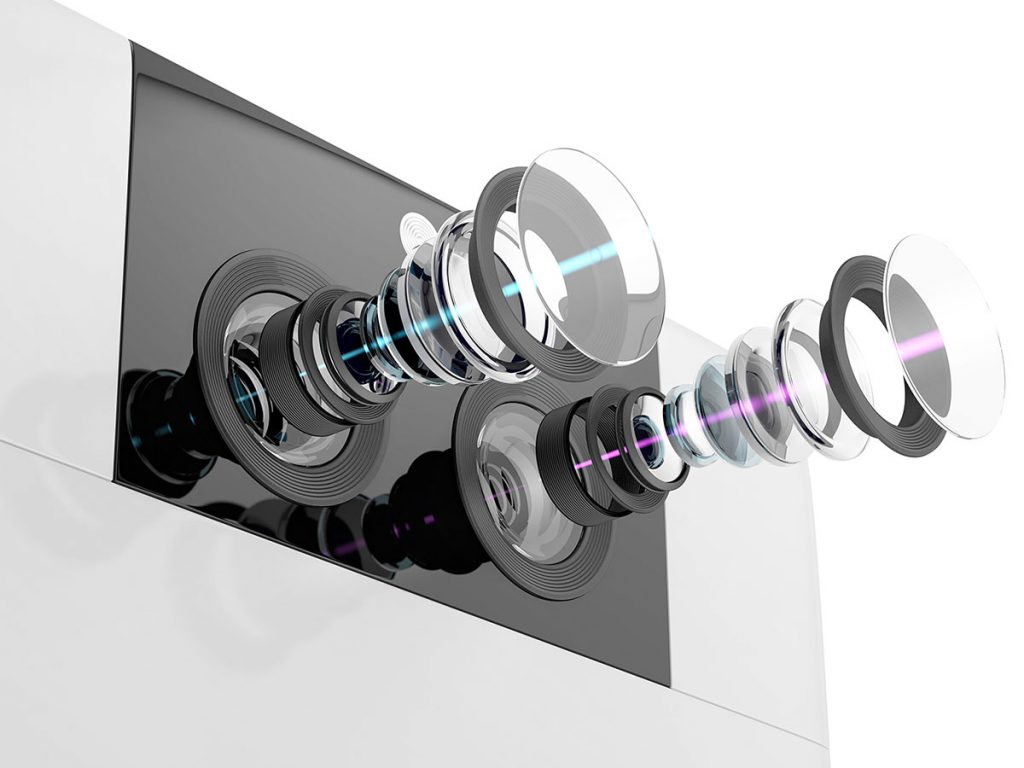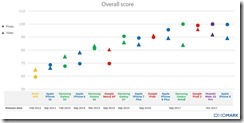Submitted by David Cardinal on Tue, 03/03/2020 - 08:55
I had the fun and educational experience of moderating a panel on sensors for cars at Electronic Imaging 2020 recently. Of course there were cameras, but much of the focus was on how lidars, radars, and thermal imaging can complement traditional visible light images. I’ll be curious how innovations in these areas impact our traditional notion of photography as they become less-expensive. As regular readers know, I’ve already done a lot of experimenting with thermal imaging for creative photography. You can read .
Submitted by David Cardinal on Thu, 02/21/2019 - 10:41
 It’s no secret that smartphone’s are now by far the most popular cameras worldwide, as they become increasingly capable. While improvements in image processing, sensors, and optics have helped them catch up to more traditional cameras, many of their recent gains can be attributed to the creative use of multiple camera modules. That’s an option that standalone camera makers have experimented with (stereo and 360-degree models, for example), but have never pushed very far. .
It’s no secret that smartphone’s are now by far the most popular cameras worldwide, as they become increasingly capable. While improvements in image processing, sensors, and optics have helped them catch up to more traditional cameras, many of their recent gains can be attributed to the creative use of multiple camera modules. That’s an option that standalone camera makers have experimented with (stereo and 360-degree models, for example), but have never pushed very far. .
Submitted by David Cardinal on Thu, 02/08/2018 - 09:59
Industry camera benchmarking site DxOMark has published an interesting white paper chronicling the progress it has seen in 6 years of testing smartphone image quality. The progress in both hardware and software behind the improvement in results is fascinating and impressive. I’ve , along with charts from the paper and a link to the original.
Submitted by David Cardinal on Tue, 02/28/2017 - 08:29
 New technologies like multiple-sensor cameras, multi-frame noise reduction techniques, and new platforms like drones mean that we'll need to totally-overhaul the way we assess the quality of a camera for its intended purpose. I was privileged to be invited to give a talk on the topic – sharing my perspective as a professional photographer, tech journalist, and camera reviewer with a room full of interested imaging scientists that will need to be creating the needed solutions. For those curious about where we’re heading, you can follow along with my presentation:
New technologies like multiple-sensor cameras, multi-frame noise reduction techniques, and new platforms like drones mean that we'll need to totally-overhaul the way we assess the quality of a camera for its intended purpose. I was privileged to be invited to give a talk on the topic – sharing my perspective as a professional photographer, tech journalist, and camera reviewer with a room full of interested imaging scientists that will need to be creating the needed solutions. For those curious about where we’re heading, you can follow along with my presentation:
Submitted by David Cardinal on Tue, 09/01/2015 - 12:35
For the last couple months I’ve been traveling with both a (that fits in my shirt pocket) and a (that barely fits in a cargo pocket). I’ve had a lot of fun with both cameras. While they have very similar sensors, they are different in almost every other way. Since they are both likely to be popular choices for image lovers looking for the ultimate compact camera, here are my thoughts on the very new ONE (you can ), and how it contrasts with a traditional high-end point-and-shoot… #dxoone
Submitted by David Cardinal on Sat, 03/24/2012 - 14:53
The set the all time record score of 95 on its DxOMark tests, eclipsing the previous "king for 3 days," the . In short, purchasers of either camera are likely to be delighted with the images they get. Of course there is more to a camera than just the image quality, but if you'd like to read up on all the scores of the D800 and the D4 you can head over to the You can from B&H, or the .


 It’s no secret that smartphone’s are now by far the most popular cameras worldwide, as they become increasingly capable. While improvements in image processing, sensors, and optics have helped them catch up to more traditional cameras, many of their recent gains can be attributed to the creative use of multiple camera modules. That’s an option that standalone camera makers have experimented with (stereo and 360-degree models, for example), but have never pushed very far.
It’s no secret that smartphone’s are now by far the most popular cameras worldwide, as they become increasingly capable. While improvements in image processing, sensors, and optics have helped them catch up to more traditional cameras, many of their recent gains can be attributed to the creative use of multiple camera modules. That’s an option that standalone camera makers have experimented with (stereo and 360-degree models, for example), but have never pushed very far. 
 New technologies like multiple-sensor cameras, multi-frame noise reduction techniques, and new platforms like drones mean that we'll need to totally-overhaul the way we assess the quality of a camera for its intended purpose. I was privileged to be invited to give a talk on the topic – sharing my perspective as a professional photographer, tech journalist, and camera reviewer with a room full of interested imaging scientists that will need to be creating the needed solutions. For those curious about where we’re heading, you can follow along with my presentation:
New technologies like multiple-sensor cameras, multi-frame noise reduction techniques, and new platforms like drones mean that we'll need to totally-overhaul the way we assess the quality of a camera for its intended purpose. I was privileged to be invited to give a talk on the topic – sharing my perspective as a professional photographer, tech journalist, and camera reviewer with a room full of interested imaging scientists that will need to be creating the needed solutions. For those curious about where we’re heading, you can follow along with my presentation:![1434734130000_IMG_506470[1] 1434734130000_IMG_506470[1]](http://www.cardinalphoto.com/sites/default/files/1434734130000_IMG_506470%5B1%5D_thumb.jpg)
